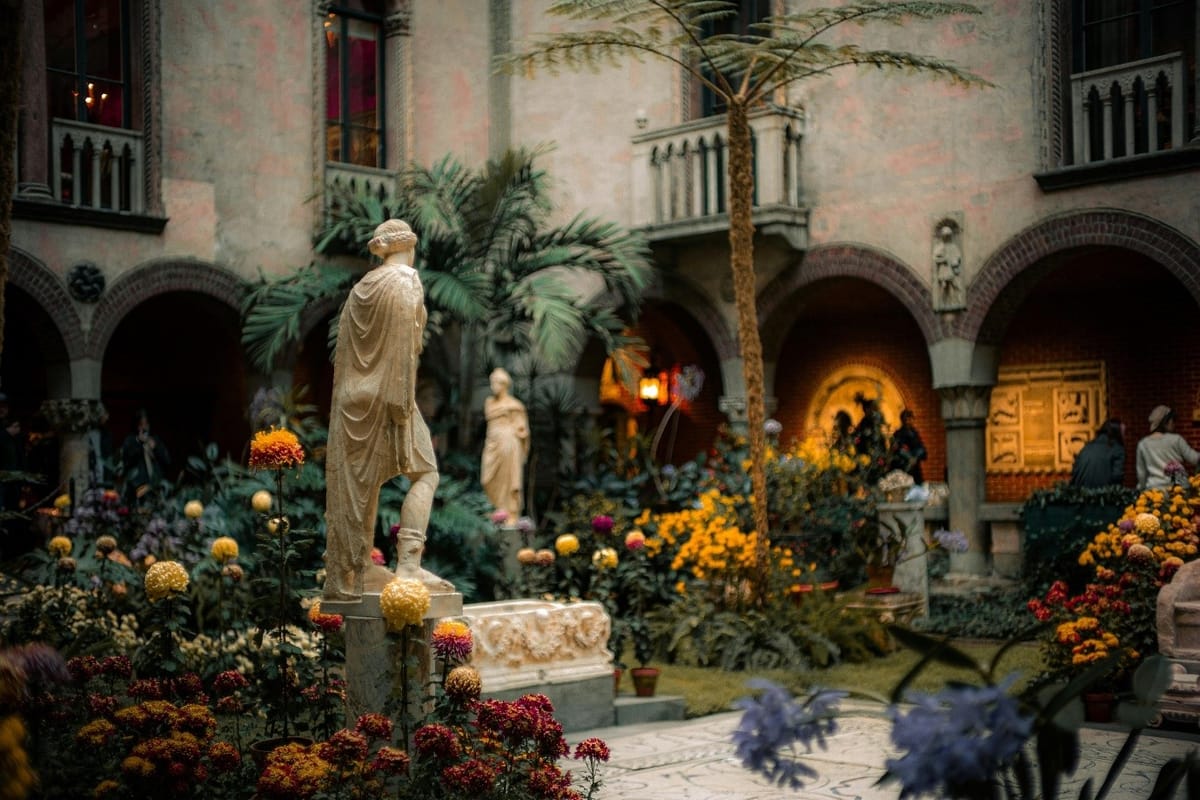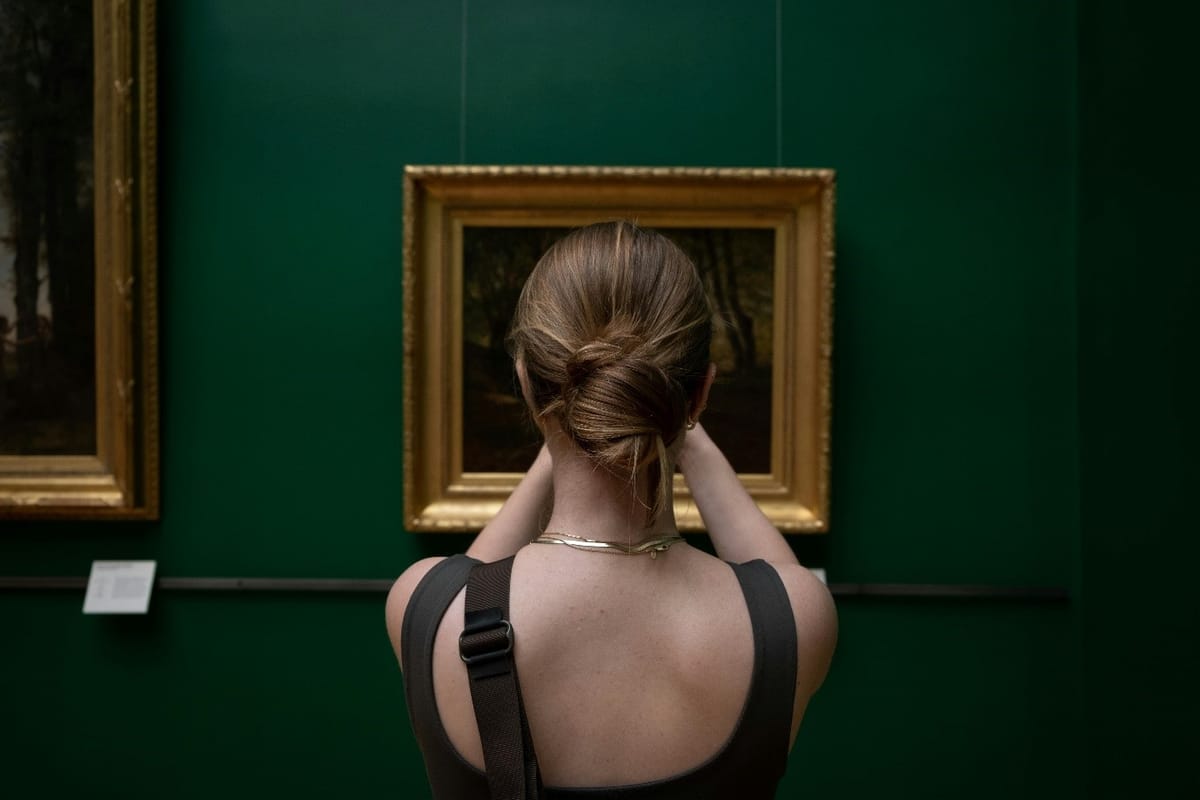Haunted Art Spaces: Where History and Spirits Linger Through Masterpieces
From the Louvre’s regal specters to the eerie presence at the Tate Britain, these spaces hold art—and perhaps the spirits of those who lived through the moments captured on canvas and stone.

Art is often thought of as a mirror to the human soul, capturing emotions, history, and at times, trauma. But what if the energy, emotion, and even the spirits tied to a work of art linger beyond the canvas or stone? In the world's most famous galleries and museums, art may serve as more than a visual experience—some believe it acts as a spiritual conduit, carrying with it the legacies, memories, and sometimes the ghosts of its creators and subjects. From the Louvre to Tate Britain, certain artworks seem to hold more than just history. Could these haunted spaces offer a connection to the past that is as emotional and spiritual as it is intellectual?
The Louvre: Art That Anchors the Spirit
The Louvre’s walls are lined with some of the world’s most iconic masterpieces, but two works in particular seem to have special ties to the haunted reputation of this grand museum.
One such piece is "The Winged Victory of Samothrace", a 2nd-century BC marble sculpture that captures the goddess Nike standing at the helm of a ship, celebrating triumph. With its dramatic posture and its placement at the top of the museum’s grand staircase, many visitors report feeling an unsettling sense of awe and reverence. Some claim to experience an inexplicable sense of unease when standing before this headless figure, as though the sculpture itself radiates the energy of the ancient world. Could the Winged Victory carry within it the spirits of the past, or is it merely a product of its overwhelming presence?
Similarly, "The Raft of the Medusa" by Théodore Géricault, a massive depiction of a tragic shipwreck, seems to be linked to a darker, more tragic energy. The painting captures the desperation and horror of survivors left stranded at sea, drifting on a makeshift raft. Géricault’s meticulous attention to the raw human emotions of death, suffering, and survival has made this painting one of the most emotionally intense works in the Louvre. Some visitors report feeling physically uncomfortable when viewing the piece up close, almost as if the lingering energy of the event haunts the canvas itself. Could the emotional turmoil immortalized in the painting still resonate in the gallery, drawing something more than just admiration?
These artworks tap into emotions of triumph and tragedy that transcend their physical form. Could it be that these powerful emotions have anchored more than just the history of these works—but also the spirits tied to them? The haunted reputation of the Louvre seems to be intertwined with the art itself, where history and spirits may linger.
The Tate Britain: Turner’s Haunting Landscapes
At The Tate Britain, The Man with the Bowler Hat is said to be one of the museum’s spectral visitors, often seen near the works of J.M.W. Turner. Known for his emotionally charged seascapes, Turner’s work captures the turbulent power of nature, often filled with images of ships struggling against violent storms. His painting "The Fighting Temeraire", which shows a grand ship being towed to its final berth, stands as a tribute to the past while meditating on themes of death and the passage of time. Could these haunting themes have invited something more into Turner’s gallery?
Visitors to the Tate report a heavy, oppressive atmosphere surrounding Turner’s works, as if the energy from the storms and battles depicted on his canvases remains alive within the museum’s walls. Could the spirits of those lost at sea or the emotional intensity of Turner’s work be drawing unseen entities into the gallery? Turner’s mastery of the sublime, the overwhelming tension between nature and humanity, often leaves visitors feeling as though they are not alone in his gallery.
Turner’s ability to portray the fragility of life in the face of nature’s overwhelming power may not just evoke deep emotional responses in viewers but also in the spirits that once faced these trials. The ghostly figure of The Man with the Bowler Hat might be drawn to these works for the same reason visitors are: the overwhelming sense that history is still alive and palpable in Turner’s seascapes.
Palazzo Vecchio: Art as a Portal to the Past
In Florence, Palazzo Vecchio stands as a symbol of power, art, and political intrigue, and it is also said to be one of the most haunted palaces in Italy. The spirit of Eleanora di Toledo, wife of Cosimo I de’ Medici, is often seen roaming the palace, particularly near the frescoes that depict her life. The Quartiere di Eleonora contains some of the most personal and intimate frescoes, reflecting Eleanora’s domestic and political power. Visitors have claimed to see her ghost lingering near these frescoes, as if drawn to the images that preserve her legacy. Could these works of art serve as a portal for her spirit, tethering her to the palace she once ruled?
Beyond the personal legacy of Eleanora, the Salone dei Cinquecento, a grand hall filled with heroic and political frescoes, also seems to hold supernatural energy. The battle scenes and political triumphs painted on its walls capture the turbulent emotions of Florence’s golden age. Could the spirits of those who lived, fought, and died in these times be tied to the art itself, still present in the scenes of power and conflict?
Palazzo Vecchio seems to serve not only as a museum of history but also as a space where art keeps the past alive. The spirits of the Medici and their subjects may remain connected to the very images that immortalize their lives and struggles.
Art as a Gateway to the Past
The idea that art serves as a spiritual or emotional conduit extends beyond these individual works and haunted spaces. Art’s ability to capture a moment in time goes deeper than just history—it holds the power to preserve the emotional, spiritual, and sometimes supernatural aspects of those moments. As we walk through galleries like the Louvre, stand before Turner’s stormy seascapes at the Tate Britain, or explore the frescoed chambers of Palazzo Vecchio, we are not merely observers; we are stepping into a dialogue with history’s deepest emotions and spirits.
In some cases, the emotional intensity or historical significance of a piece of art may be enough to draw in the energy of those long past. Could the pain and suffering depicted in "The Raft of the Medusa" or the grandeur of battle scenes in the Palazzo Vecchio anchor the spirits of those who experienced these moments? These works of art challenge us to consider that the past is not as distant as it seems.
Art is more than just a visual medium—it’s a conduit between the physical and the spiritual, allowing us to feel history in a way that surpasses intellectual understanding. Perhaps this explains why certain art spaces resonate so deeply with us: they hold not just the history of the world but also the echoes of the souls who once lived, loved, and created.
As you explore these haunted galleries, you may begin to wonder: is it just the art that draws you in, or is there something more—something that watches you as you stand before the masterpieces?
For those eager to experience more, there are countless haunted art spaces around the world. From the ghostly sightings at Isabella Stewart Gardner Museum in Boston to the eerie happenings at Edinburgh’s National Galleries, the link between art and the supernatural stretches across the globe. Are you brave enough to explore them and see what lingers beneath the surface of history?
ART Walkway News
You may also like









